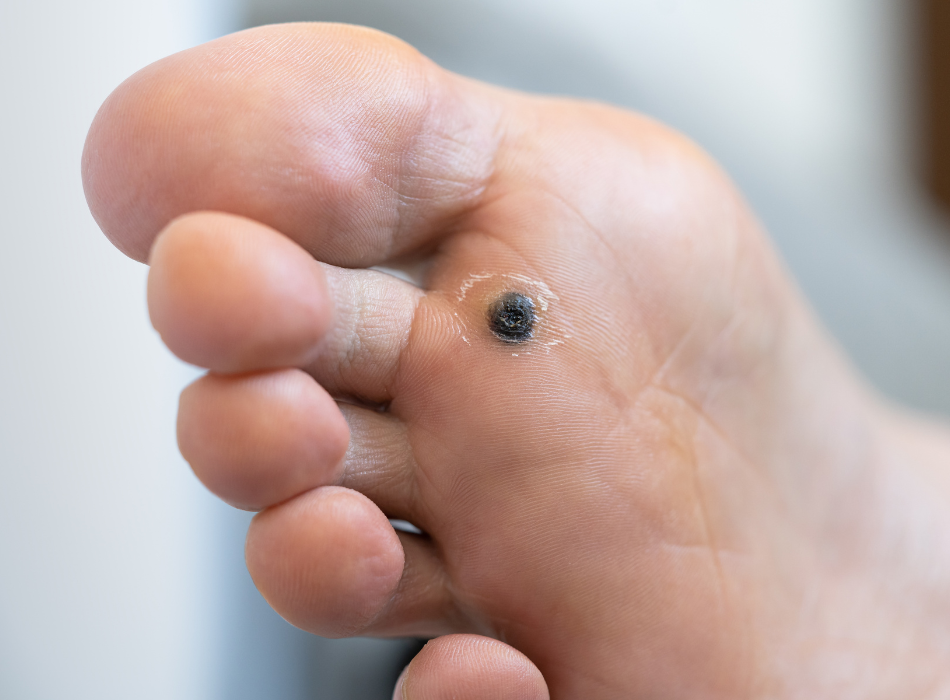Ever stepped on something uncomfortable, only to find a rough, wart-like bump staring back at you from the bottom of your foot? You’re not alone. Plantar warts are a common nuisance, especially for kids and teenagers.
But what exactly are these stubborn spots, and how do you know if it’s a wart or just a callus?
The Culprit: A Sneaky Virus
Plantar warts are caused by the human papillomavirus (HPV), the same virus that causes warts on other parts of your body. There are over 100 strains of HPV, but only a few specific strains target the soles of your feet. The virus enters your skin through tiny cuts or breaks, setting up shop and causing the characteristic wart to form.
Spotting the Enemy: Signs of Plantar Warts
While plantar warts can sometimes be painless, they often come with some tell-tale signs:
- Location, Location, Location: Plantar warts favor weight-bearing areas of your foot, like your heels or the balls of your feet. This pressure can make them feel tender or painful, especially when walking or standing.
- The “Black Dot” Giveaway: Unlike calluses, plantar warts often have tiny black dots in the center. These are clotted blood vessels feeding the wart.
- Rough and Tough: Plantar warts tend to be rougher in texture than calluses. They might also disrupt the normal lines and ridges on the skin of your foot.
Combating the Wart: Treatment Options
The good news is that plantar warts are usually harmless and often go away on their own. However, if they’re causing pain or you just want them gone faster, there are treatment options available. Here are a few common approaches:
- Over-the-counter medications: Medicated pads containing salicylic acid can help gradually remove the wart layer by layer.
- Freezing: Cryotherapy involves applying liquid nitrogen to freeze and destroy the wart tissue.
- Minor surgery: In some cases, a podiatrist (foot doctor) might recommend removing the wart with a scalpel or laser.
Preventing Plantar Warts: Keeping Your Feet Happy
The best defense is always a good offense! Here are some ways to help prevent plantar warts:
- Keep your feet clean and dry: Wear moisture-wicking socks and change them daily.
- Protect your feet in public places: Wear sandals or flip-flops in communal showers or pool areas.
- Don’t pick or scratch at warts: This can spread the virus.
When to See a Doctor
If your plantar wart is very painful, doesn’t respond to treatment, or you have a weakened immune system, it’s always best to consult a podiatrist or doctor.
By understanding plantar warts and taking steps to prevent and treat them, you can keep your feet healthy and pain-free. So next time you feel a suspicious bump on your sole, you’ll be armed with the knowledge to tackle it head-on (or should we say, foot-on?).




